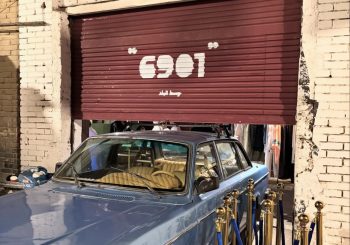As the country’s population continues to increase, particularly in its major metropolitan areas, the demand for accessible outdoor retreats has become increasingly apparent.
Historically, urban planning in Egypt has often prioritized infrastructure development, commercial growth, and exclusive green spaces, frequently overlooking public recreational areas.
This imbalance has resulted in a landscape dominated by towering buildings, congested streets, and a relative shortage of green spaces where citizens can escape the hustle and bustle of daily life.
For example, Al-Azhar Park, a sprawling 74-acre oasis in the heart of Cairo and near the City of the Dead, stands as a testament to the transformative power of urban green spaces.
Opened in 2005, the park has become a beloved destination for locals and tourists alike, offering a serene escapism from the city’s relentless pace.
Some of the other well-known public parks in Egypt also include the Al-Orman Garden, the Aquarium Grotto Garden, and Umm Kulthum Park, although these are also primarily concentrated in Cairo.
Yet, as impressive as Al-Azhar Park and other parks may be, they remain exceptions in Egypt’s urban landscape. There is a need for more public parks in other parts of Egypt according to a 2022 research conducted by Professors Merham M. Keleg and Mohamed A. Salheen.
The research emphasizes that green spaces significantly impact the health and well-being of residents. Moreover, these areas play a crucial role in shaping the city’s overall image and enhancing walkability, ultimately attracting more visitors and tourists in the long-run.
Beyond Cairo
Across the country, public parks are often scarce, leaving many citizens without access to the physical and mental health benefits that come with spending time in nature.
This scarcity leads to the move of privatization and their transformation of once a public green space to local shops and restaurants.
In an interview with several advocates against tree cutting, a yearly practice conducted by the Egyptian government with the aims of road developments and infrastructure expansions, Al Ahram reports on the gradual erasure of greenery.
”Other green spaces in the city have also been diminished. Once spanning over 50 acres, these areas have been significantly reduced to accommodate coffee shops, restaurants, and income-generating activities, transforming what were once free recreational spaces for families and children into commercial zones,” reports Al Ahram.
The lack of public parks in Egypt is not just a matter of aesthetics; it has far-reaching consequences for the overall well-being of the country’s citizens.
A 2017 study by the National Center for Biotechnology Information proved that access to green spaces can have a positive impact on physical and mental health, reducing stress, improving air quality, and fostering social cohesion.
Construction Over Greenery
Recognizing the urgent need to address this imbalance, some local authorities have taken steps to revitalize and expand Egypt’s public park system. In recent years, the government has launched initiatives to restore existing parks, create new sustainable green spaces, and promote the importance of outdoor recreation.
However, these efforts remain insufficient to meet the growing demand for public green spaces across Egypt. This demand notably surged after the removal of approximately 2,500 trees in Cairo’s eastern Heliopolis between 2019 and 2020, driven by bridge-building projects.
Choucri Asmar, chair of the Heliopolis Heritage Foundation board, highlighted to Media Line, in July 2024, that the focus of urban planning appears to prioritize the construction of highways leading to the New Administrative Capital, including the development of around a dozen new bridges in Heliopolis.
This shift in focus raises concerns about the accessibility and maintenance of existing public spaces.
Additionally, various parks in Egypt charge entrance fees, which can pose a barrier for residents seeking accessible green spaces. For example, the dog park in Heliopolis charges EGP 20 (USD 0.41) per person, while Al-Azhar Park has an entry fee of EGP 50 (USD 1) on Fridays and 40 (USD 0.82) EGP on weekdays. These costs can discourage regular visits, especially for families or individuals on tight budgets who may prioritize other expenses.
As urban development continues to trend toward gated communities, which often feature their own private green spaces, prioritizing the enhancement of public parks seems to dwindle. Residents of these communities may feel less inclined to advocate for the improvement of public parks, as they have immediate access to greenery within their own neighborhoods.
With fewer efforts directed towards making the city itself greener, the potential for inclusive public spaces diminishes. Consequently, the overall quality of life for urban residents suffers, as opportunities for outdoor recreation, social interaction, and community bonding become increasingly confined to privately owned areas.







Comments (0)